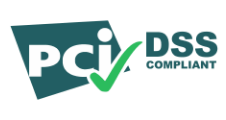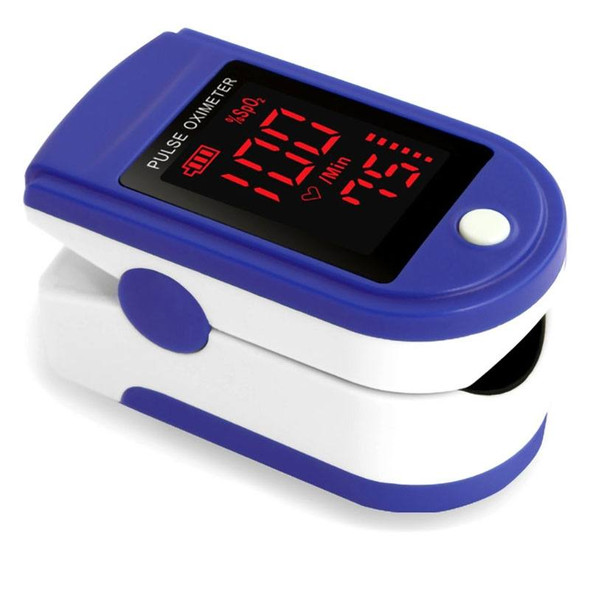For rapid, accurate measurements of Sp02 and Pulse Rate, with easy to read results, the Fingertip Pulse Oximeter is perfect for use in medical settings, sports clubs and in the comfort and privacy of your own home.
Key Features:
- The Finger Pulse Oximeter is CE & FDA approved
- Ideally suited for use in a medical setting, the home or sports clubs
- Can measure Sp02 and Pulse Rate accurately and quickly and features a Sp02, PR and PR Waveform display
- Features a battery voltage low indication
- Offers four directions and eight different modes
- Low power consumption: shuts off automatically when no signal is detected
- Pulse sound function
- Alarm function
- Color OLED display - 4 display directions
- Perfusion Index display
- Easy, one-button operation
How to Use:
- Install 2 AAA batteries into the battery compartment
- Note: Batteries insert L +/- and R -/+ (inside device instruction)
- Place damp over finger nail as per diagram on instruction sheet
- Insert one finger fully into the rubber hole of the Oximeter
- Press the switch once on the front panel of Oximeter
- Finger and body should not tremble during use
Related Products:
Frequently Asked Questions
What is a Finger Pulse Oximeter and how does it work?
A Finger Pulse Oximeter is a non-invasive device that measures the oxygen saturation level (SpO₂) in your blood and your pulse rate. It operates by emitting light through your fingertip and detecting the amount of light absorbed by oxygenated and deoxygenated hemoglobin, providing a quick assessment of your blood oxygen levels.
What are the key features of this Finger Pulse Oximeter?
- CE & FDA Approved: Ensures compliance with international health and safety standards.
- Versatile Use: Suitable for medical settings, home use, and sports clubs.
- Accurate Measurements: Quickly measures SpO₂ and Pulse Rate.
- Comprehensive Display: Shows SpO₂, Pulse Rate, and Pulse Waveform.
- Battery Indicator: Alerts when battery voltage is low.
- Multiple Display Modes: Offers four directions and eight different modes.
- Energy Efficient: Automatically shuts off when no signal is detected.
- Pulse Sound and Alarm Functions: Provides auditory feedback and alerts.
- Color OLED Display: Features a 1.3-inch color OLED screen with adjustable brightness.
- Perfusion Index Display: Indicates the strength of the pulse signal.
- User-Friendly Operation: Operates with a single button for ease of use.
How do I properly use the Finger Pulse Oximeter?
- Insert Batteries: Install 2 AAA batteries into the compartment, ensuring correct polarity.
- Prepare Finger: Remove any nail polish and warm your hands if they are cold to ensure accurate readings.
- Position Finger: Place your finger fully into the rubber hole of the Oximeter, ensuring it is positioned correctly.
- Activate Device: Press the switch once on the front panel to turn on the Oximeter.
- Remain Still: Keep your finger and body steady during the measurement to avoid inaccuracies.
- Read Results: Wait a few moments for the device to display your SpO₂ and Pulse Rate readings.
What do the SpO₂ and Pulse Rate readings indicate?
- SpO₂ (Oxygen Saturation): Represents the percentage of oxygen-saturated hemoglobin in your blood. Normal levels typically range from 95% to 100%.
- Pulse Rate: Indicates the number of heartbeats per minute. A normal resting heart rate for adults ranges from 60 to 100 beats per minute.
Consistently low SpO₂ readings may indicate hypoxemia, a condition requiring medical attention.
Can I use the Finger Pulse Oximeter during physical activities?
Yes, the Finger Pulse Oximeter is suitable for use during physical activities. However, for accurate readings, it's recommended to remain still during measurement, as excessive movement can affect the device's accuracy.
How do I interpret the Perfusion Index (PI) displayed on the Oximeter?
The Perfusion Index (PI) is a numerical value that indicates the strength of the pulse signal detected by the Oximeter. A higher PI value suggests a stronger pulse signal, which can contribute to more reliable SpO₂ and Pulse Rate readings. While there is no standard normal range for PI, it can be useful in assessing the quality of the measurement.
What should I do if the Oximeter displays an error or inconsistent readings?
- Check Battery Levels: Ensure the batteries are properly installed and have sufficient charge.
- Proper Finger Placement: Make sure your finger is correctly positioned in the device.
- Minimize Movement: Remain still during measurement to avoid motion artifacts.
- Remove Nail Polish: Nail polish can interfere with the sensor; remove it before use.
- Warm Hands: Cold fingers can affect readings; warm your hands if necessary.
If issues persist, consult the user manual or contact customer support for assistance.
Is the Finger Pulse Oximeter suitable for children?
This Finger Pulse Oximeter is primarily designed for adult use. For pediatric patients, especially infants and young children, it's advisable to use devices specifically designed for their smaller finger sizes to ensure accurate readings.
How do I maintain and clean the Finger Pulse Oximeter?
- Cleaning: Use a soft, dry cloth to clean the device's exterior. Avoid using harsh chemicals or submerging the device in liquids.
- Storage: Store the Oximeter in a dry place, away from direct sunlight and extreme temperatures.
- Battery Care: Remove the batteries if the device will not be used for an extended period to prevent battery leakage.
Regular maintenance ensures the longevity and accuracy of the device.
Can the Finger Pulse Oximeter detect irregular heartbeats?
While the Finger Pulse Oximeter measures pulse rate, it is not designed to detect arrhythmias or irregular heartbeats. For monitoring heart rhythm abnormalities, consult a healthcare professional for appropriate diagnostic tools.






















